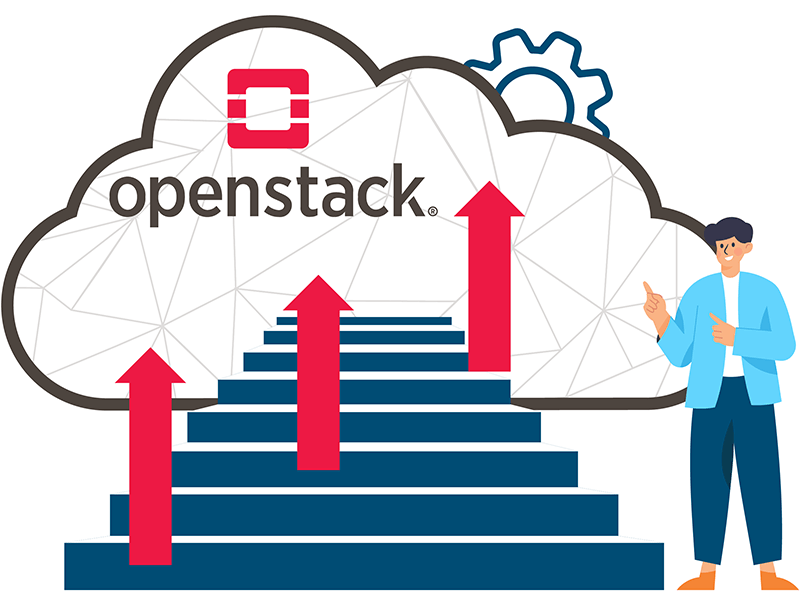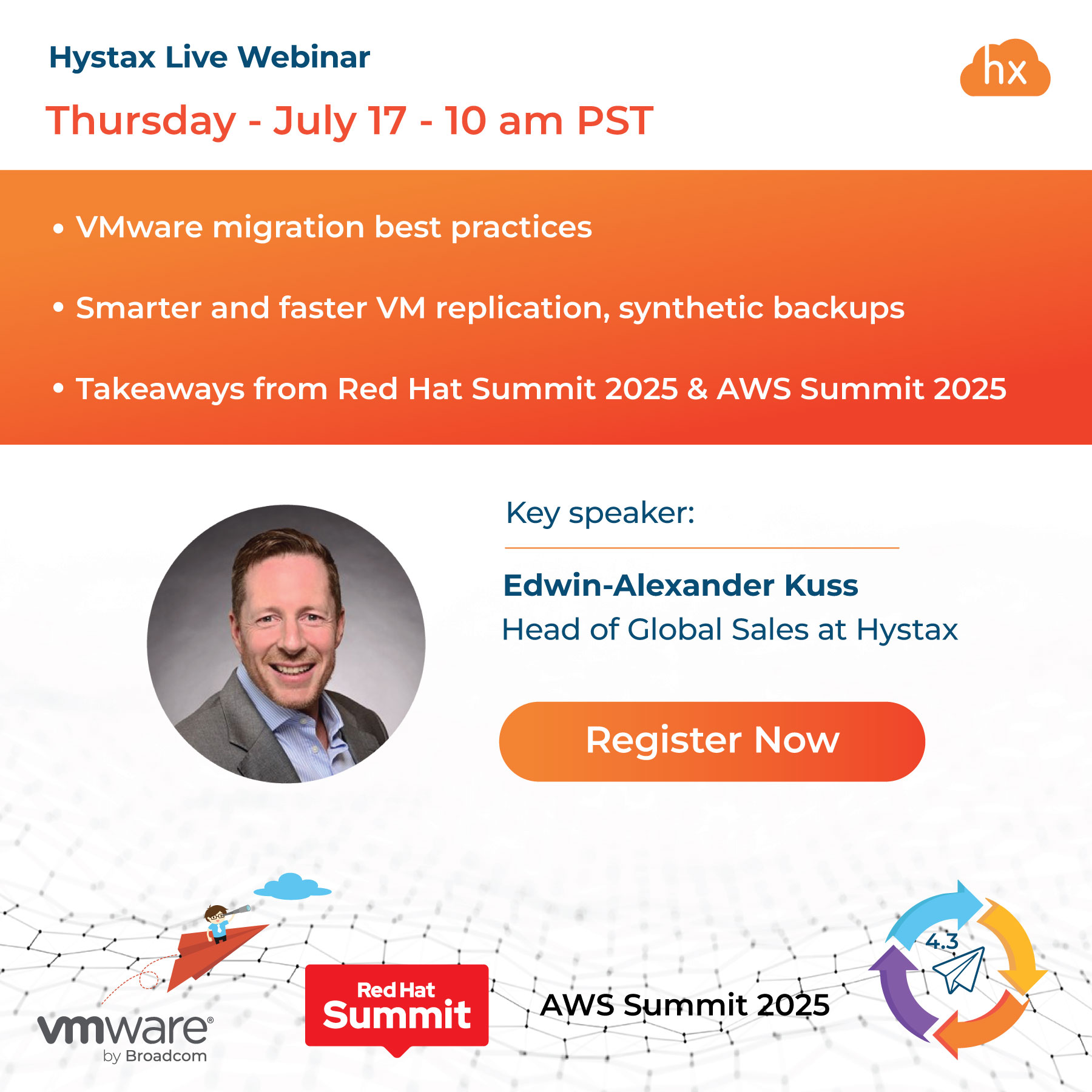In our previous article devoted to OpenStack (see Backup and disaster recovery best practices for OpenStack), we told a few words about its origins and main features. The most noteworthy characteristic of the platform in the context of cloud migration is that using it involves building a cloud infrastructure from scratch, which means that cloud migration to OpenStack implies by default – more effort and resources – when compared to other services. On the bright side, though, you get a very flexible platform that, when properly configured and used, will give you maximum performance at minimum cost, whatever a migration strategy you choose. In addition, there are solutions that can significantly facilitate the migration process – we will talk about them in the final part of the article.
Benefits of Cloud Migration to OpenStack

Why would a company want to migrate its data, applications, databases, and IT processes to the OpenStack cloud? Speaking generally, there are four main reasons for that:
- Better orchestration and automation: OpenStack is a flexible platform, meaning you can think through your strategy and implement it to ensure efficient cloud orchestration and automation.
- Significant cost reduction: once again, the platform’s flexibility and possibility to make up everything from scratch will help keep costs reasonable.
- Lock-in avoidance: since OpenStack is an open cloud platform, you won’t fall victim to vendor lock-in.
- Support for native and compatible API.
Cloud migration steps to OpenStack
Some time ago, we discussed the cloud migration process as part of the Microsoft Azure review. Regarding OpenStack, our modus operandi would be the same at a high level.
So, there will be the following five essential steps:
- Step one: cloud migration preparation
- Step two: replication
- Step three: orchestration
- Step four: testing migrations
- Step five: final cutover
At the first step, you’ll need to ensure everything is ready for cloud migration: the right strategy is chosen, the processes of migrating existing IT infrastructure to the cloud are well-defined and documented, and all of the company’s stakeholders are in the know.
A few words about cloud migration strategies are here. Conventionally, there are five strategies for migrating to the cloud – they are also called R’s by their first letters. Here is a list of them (in order of depth of integration with the cloud):
- Rehosting (also called lift-and-shift)
- Replatforming
- Refactoring
- Rebuilding
- Repurchasing
These strategies also differ in the approaches used – it can be IaaS (Infrastructure-as-a-Service), PaaS (Platform-as-a-Service), or SaaS (Software-as-a-Service).
The IaaS approach is used for rehosting and replatforming. With both these strategies, when moving the software to the cloud, you make very few changes to the applications or make no changes to make them work in the cloud environment.
The PaaS approach is essentially more profound compared to IaaS. It implies refactoring or rebuilding your applications to fit them into the target cloud platform. In short terms, refactoring means re-coding applications to provide the cloud environment. Although this strategy is scalable, agile, and potentially the most efficient in a long time, it’s intensive and takes much investment in the short term. Rebuilding is just an even more labor-intensive variation of the refactoring strategy.
Finally, the SaaS approach is when you purchase new software compatible with the cloud you’re migrating and tune up the processes to fit this newly acquired software best.
Let’s go back to cloud migration. The second step of the process is replication, a sophisticated workflow that, by default, involves using several native tools. However, many, even very experienced IT professionals, may struggle with that, and third-party tools can make their lives much easier by making this step semi-automated or fully-automated.
The third step is about the orchestration process of launching applications in the new IT environment to ensure everything is like clockwork: data is integral, there are no downtimes, etc. It can also be done with the help of a particular native orchestration program, Heat, which comprises several Python applications that streamline the orchestration process.
The fourth step is migration testing. Again, these tools, mainly third-party ones, allow you to do that. Their principle of operation is more or less the same: they simulate the migration by creating an additional non-production instance to validate the migration.
The last step is a final cutover, which means migrating servers, databases, web applications, and data.
How Hystax can help streamline cloud migration to OpenStack
Because OpenStack is an open-source project, numerous tools can help you use it in cloud migration, backup, disaster recovery, etc. Some of those tools are free and have decent usability. But still, when it comes to such a peculiar tool as OpenStack, every action counts, which means that it makes much more sense to opt for a toolset that will get you covered at every step of the cloud migration process, making it as easy as possible.
Hystax Acura is a solution that makes the process fully-automated, ensuring zero downtime during OpenStack migrations and making them virtually seamless. In addition, our software is application- and OS-agnostic, and agentless.
Here are just some of the main advantages of Hystax Acura.
Migration capabilities from bare metal & any cloud
Among the many services available on the market, Hystax is the only solution to migrate any – even the most complex workloads – from any cloud and even bare metal source platform. As a result, we can vouch for a simple deployment of migrated infrastructure with no dependency on a source platform.
No data loss and downtime during cloud migration process
Hystax is an enterprise-grade and reliable cloud migration solution that ensures a fully-automated migration process with external and internal live replication. Furthermore, it has tools that prevent data loss and allow final cutover without any production stoppage.
Managed service provider capabilities for multi-tenancy private deployments
With Hystax, you can manage all your cloud migration projects in a single pane of glass – you’ll see all the data required from multiple sources in a unified display.
An unlimited number of test migrations
Hystax enables you to run as many test migrations as you want to be able to check every single aspect of your future deployment before you proceed with the actual migration.
A set of pre-designed migration plans for different strategies
You can either create a cloud migration plan from scratch or you can use one of our pre-designed cloud migration “templates” – this will allow you to launch applications in a certain order, which will ensure data integrity, help avoid downtime and save resources.




